Get Zoom on Your Smart TV? Here’s How You Can Do It
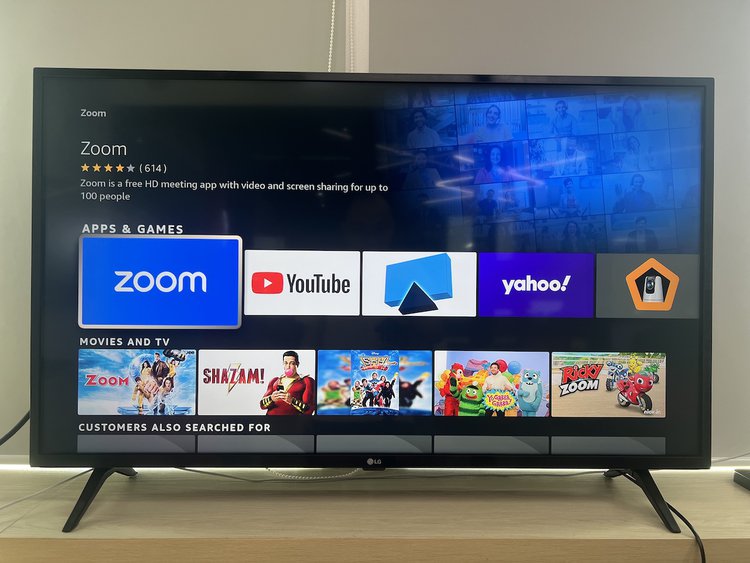
What To Know
- Zoom can be used on smart TVs that support the app natively, like Amazon Fire TV, and requires downloading the app and having a built-in webcam and microphone.
- For TVs that don’t support Zoom, users can connect via HDMI cable, cast from an Android phone, or use AirPlay with Apple devices after ensuring all devices are on the same Wi-Fi network.
- While using Zoom on a smart TV can offer a larger display and accommodate multiple viewers, it may require additional accessories and comes with a potential for technical issues.
Are you wondering if you can elevate your video meetings by using Zoom on a smart TV?
In this guide, we will quickly explore how to make your calls more professional and comfortable on a larger screen, detailing both the advantages and the setup process.
Quick Navigation
Can You Use the Zoom App on a Smart TV?
Yes, you can use the Zoom app on a smart TV.
You can absolutely use the Zoom app on your smart TV!
While not all smart TVs natively support the Zoom app, there are several such as Amazon Fire TV that do, and it’s easy to install and use.
All you need to do is download the Zoom app directly onto your smart TV via the app store.
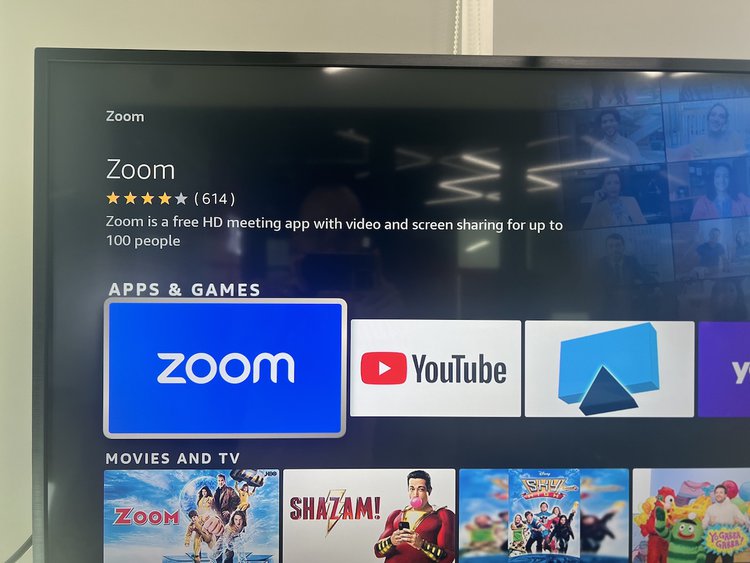
Make sure your TV has a built-in webcam and microphone before entering your login credentials. Note that many smart TV remotes have a microphone so you can sit farther away from the TV and still be heard.
Join a call, and you’re all set!
How Can I Use Zoom on a Smart TV That Doesn’t Support the Zoom App?
There are a few different ways you can use Zoom on a smart TV that doesn’t have the Zoom app.
You may find that your smart TV doesn’t support the Zoom app.
Have no fear! You can still take your Zoom calls on a big screen!
Let’s learn the other ways you can use Zoom on a smart TV without downloading the app on your TV.
Your smart TV must have a built-in microphone and webcam to use the app.
Connect via an HDMI Cable
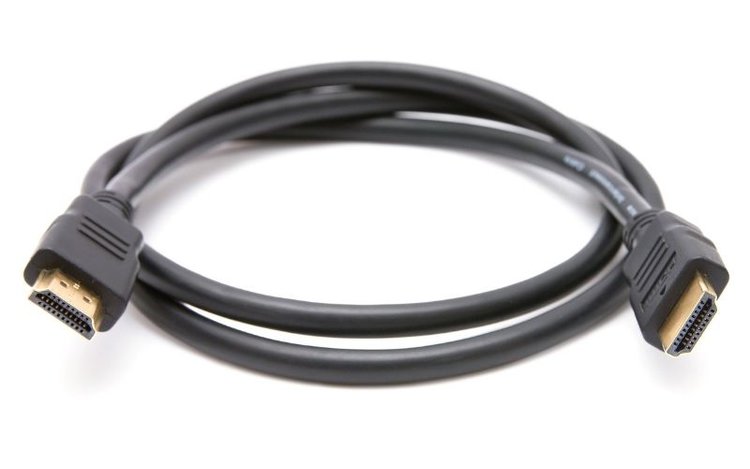
You can connect your laptop to your TV via HDMI cable. It’s also possible to connect your phone using an HDMI cable and adapter, but connecting the necessary accessories, such as a webcam and microphone will be difficult.
Step 1: Plug an HDMI cable into your laptop and smart TV. If you have a MacBook, you may need to use a USB-C to HDMI cable or a Mini DisplayPort to HDMI cable , depending on the model.
Step 2: Connect a webcam to your computer by plugging it into its USB port. Place the webcam on top of your TV and position it according to your preferences.
We like the EMEET 1080P Webcam because it has two built-in microphones, which reduce the sound of background noise.
Step 3: (Optional) If your laptop or webcam’s microphone is too weak, you can connect an external microphone via a USB port. If your external microphone’s cable is too short to reach from your laptop to your sitting area, you can use a USB extension cable .
The JOUNIVO USB Microphone is a great choice for Zoom calls since it has a built-in mute button, so you can control your microphone without reaching for your laptop.
Step 4: Change your TV’s input source to the correct HDMI input by clicking Input or Source on your TV remote.
You did it! Now you can use Zoom without downloading the app onto your smart TV.
Watch the video below demonstrating how to use Zoom on your TV with your laptop and an HDMI cable.
Cast Your Android Phone
You can wirelessly cast your Android phone to your smart TV to use Zoom on the big screen.
Let’s learn how!
Step 1: Connect your phone and smart TV to the same Wi-Fi signal. You can also connect them to your hotspot if your Wi-Fi signal is weak.
Step 2: In your Android phone’s settings, go to More, then click Wireless Display and toggle it on.
Step 3: On your smart TV, open the Settings, then select Miracast.
Step 4: You’re ready to connect once the Miracast app displays a message reading, “Waiting for the user to connect.” Click on your TV’s name under Wireless Display on your phone.
Step 5: You will be able to watch the Zoom call on your TV but will have to angle the phone in front of you so other callers can see and hear you.
Watch the video below demonstrating how to connect your Android phone to a smart TV.
Connect Your MacBook, iPad, or iPhone via AirPlay
You can connect your MacBook, iPad, or iPhone to your smart TV wirelessly via AirPlay.
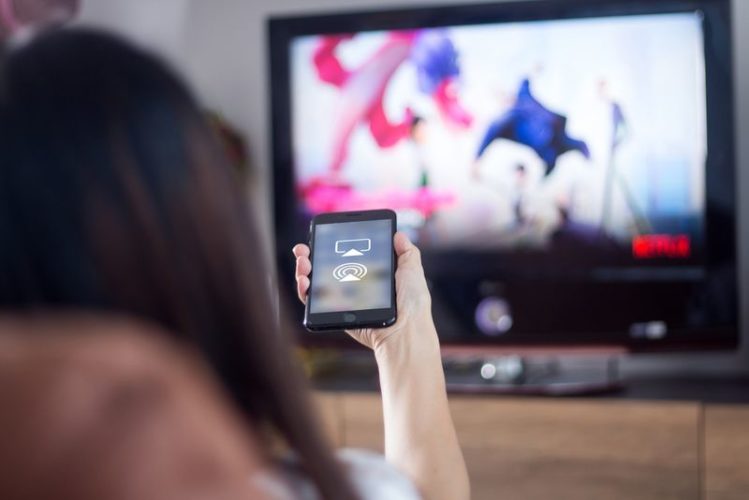
Not all smart TVs support AirPlay, so consult your model’s manual to see if you can pair it to your Apple device wirelessly.
MacBook
Step 1: Connect your TV and MacBook to the same Wi-Fi network.
Step 2: Go to your smart TV’s Settings and open General. Click on Apple AirPlay Settings and toggle AirPlay on.
Step 3: On your MacBook, click on the AirPlay icon in the top right corner, marked by a triangle inside a rectangle.
Step 4: Select your TV’s name from the AirPlay drop-down list on your MacBook.
Watch the video below to see how to connect your MacBook to a smart TV via AirPlay.
iPad and iPhone
Step 1: Connect your TV and iPad/iPhone to the same Wi-Fi network.
Step 2: Turn on your TV’s AirPlay feature by clicking Settings, then General. Open Apple AirPlay Settings and turn AirPlay on.
Step 3: Go to your iPad or iPhone’s control center by swiping up. Click Screen Mirroring, marked by an image of two overlapping rectangles.
Step 4: Select your TV’s name from the list of ready-to-pair devices.
See the video below to learn how to connect your iPad or iPhone to your smart TV wirelessly.
Pros and Cons of Zoom on a Smart TV
Let’s review the pros and cons of using Zoom on a smart TV.
Using Zoom on a smart TV is great, but it isn’t perfect. Let’s look at the upsides and downsides of taking your Zoom calls on the big screen.
Pros
It’s Easier to See
Sitting close to your screen and staring at small lettering and images all day can give you eye strain and a headache. Using Zoom on your TV will put some much-needed distance between you and the screen, giving your eyes a rest.
More People Can Watch the Call With You
Putting a Zoom call on a smart TV is a great option if you have a hybrid setup in your workplace and need to have several other people watch the call with you. Others can see the screen and be seen by those on the other end without huddling around a laptop.
Cons
You May Need To Buy Accessories
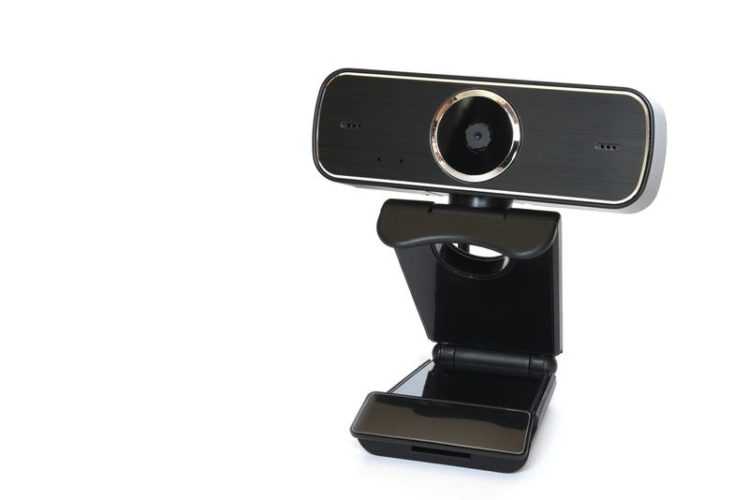
Many smart TVs don’t have built-in webcams and microphones. It makes certain aspects of this setup difficult. For example, using your phone or computer’s webcam might be too far for a clear picture. Your audio quality could be poor.
You will also need to turn and face your device so other callers see you face-on rather than your side profile.
With all this considered, you may need to make a few extra purchases to set up Zoom on your TV, which could be pricey depending on which brands you buy.
There’s a Lot of Room for Error
The Zoom app, AirPlay, Wi-Fi, and cables tend to glitch, but combine them, and you’ve got a recipe for hours of troubleshooting.
If any of these factors go awry, you could be unable to take your Zoom call. So, it’s best to test your setup beforehand and have a plan B just in case anything goes wrong.
Should I Use Zoom on My Smart TV?
You should use Zoom on your smart TV if it natively supports the app.
Using Zoom on your smart TV can be life-changing or hair-pulling.
We recommend using Zoom on your smart TV if it natively supports the app and has a built-in webcam and microphone.
Other options are possible, but there’s a lot of room for error, so you need to make sure everything is running perfectly before using it for an important meeting.
Wrapping Things Up
Taking Zoom calls on your phone is old news. Go big and go home by using Zoom on your smart TV.
You’ll be the coolest and most high-tech person on the call, as long as your TV, Wi-Fi, or cables don’t glitch.
So, try it out for yourself and see how you like it! Just have a backup plan in case something randomly stops working.
What’s your experience using the Zoom app on a smart TV? Has our article helped you decide if using Zoom on your smart TV is the right choice for you?
Let us know in the comments below!
Yesenia Achlim is a technical copywriter and editor with a focus on AV equipment. She aims to break down complicated topics and make technology accessible, no matter your technical expertise. When she’s not teaching you how to replace a projector lamp, you can find her reading and baking.


Just log in via a Browser on your smart TV. Open zoom.com or zoom.us/join
Just put in the meeting number and password.. Bingo you are on the meeting.
no downloads no installing .. For a Camera and Microphone.. buy a WEBCAM and plug into your USB port of the TV .. Even NON SMART TVs have a couple of USB ports for watching recorded movies or music.
If you found this information helpful Just send $50 to my bank acct LOL… 🙂
Just log in via a Browser on your Firestick Open zoom.com or zoom.us/join
Just put in the meeting number and password.. Bingo you are on the meeting.
no downloads no installing .. For a Camera and Microphone.. buy a WEBCAM and plug into your USB port of the TV .. Even NON SMART TVs have a couple of USB ports for watching recorded movies or music.
If you found this information helpful Just send $50 to my bank acct LOL… 🙂
The Zoom app on Fire TV allows for video meetings with gallery views and screen sharing, connecting with various devices.
1
For more detailed instructions, you can refer to the official Zoom support page.
1